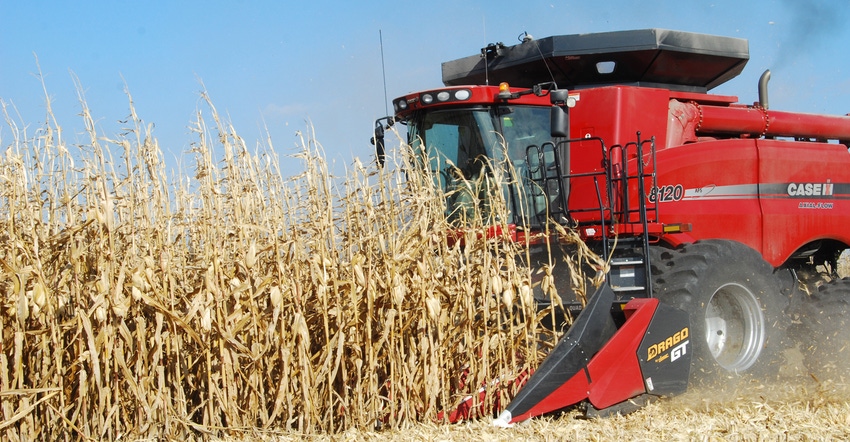
USDA is forecasting a U.S. harvest for corn at 14.8 billion bushels and soybeans at 4.7 billion bushels this fall. That would be the largest soybean crop in U.S. history and second-largest corn crop, behind 2016.
Those projections issued in September will be updated in the government’s October Crop Report. Iowa is also harvesting big crops — a record soybean crop and a near-record corn crop.
A harvest on par with these projections would continue a string of large crops the last few years, adding to global supplies that most likely will keep grain prices from rebounding.
“When you get record supplies year after year after year, it does tend to keep prices down,” says Chad Hart, Iowa State University Extension economist.
He’s encouraging farmers to find ways to protect themselves from current low crop prices. It may make sense to delay the sale of grain until winter or spring, especially if the U.S. makes progress in trade talks with major buyers such as Mexico and China.
Weak stalks cause harvesting issues
Heavy rains in recent weeks in areas of Iowa “could create grain quality problems farmers should be aware of with corn still standing in the field,” says ISU Extension agronomist Mark Licht. He urges farmers to look for mold developing on kernels on ears and to also check for stalk quality problems.
Harvest those acres first, rather than waiting for corn to dry down in the field. “Get that grain out and dried down to minimize further degradation and reduce field losses. Field scouting for molds also provides warnings about potential storage problems you want to avoid,” he advises.
If a field has 10% to 15% or more stalks infected with stalk rot, the field should be prioritized for harvest to avoid yield loss from ears ending up on the ground instead of entering the combine.
Stretching Iowa’s grain storage capacity
Another large crop will test Iowa’s storage capacity. ISU Extension grain quality expert Charles Hurburgh expects around 800 million bushels of grain harvested in Iowa this fall to be placed in temporary storage before finding a permanent home. And with corn and bean prices remaining stubbornly low, farmers are hesitating to sell new grain in hopes of finding better prices later.
Hurburgh emphasizes that successful long-term storage requires farmers to cool and dry grain as quickly as possible after getting it out of the field. He encourages farmers who find mold on corn kernels to set their driers at the maximum settings and avoid slow-drying techniques, such as low-temperature drying.
“A good portion of the crop will need to be kept over a year, so what you do now makes all the difference,” Hurburgh says. He recommends farmers dry corn down to about 14% grain moisture and soybeans 12% to 13% grain moisture if long storage periods are expected, well into spring and summer of 2019.
About the Author(s)
You May Also Like




